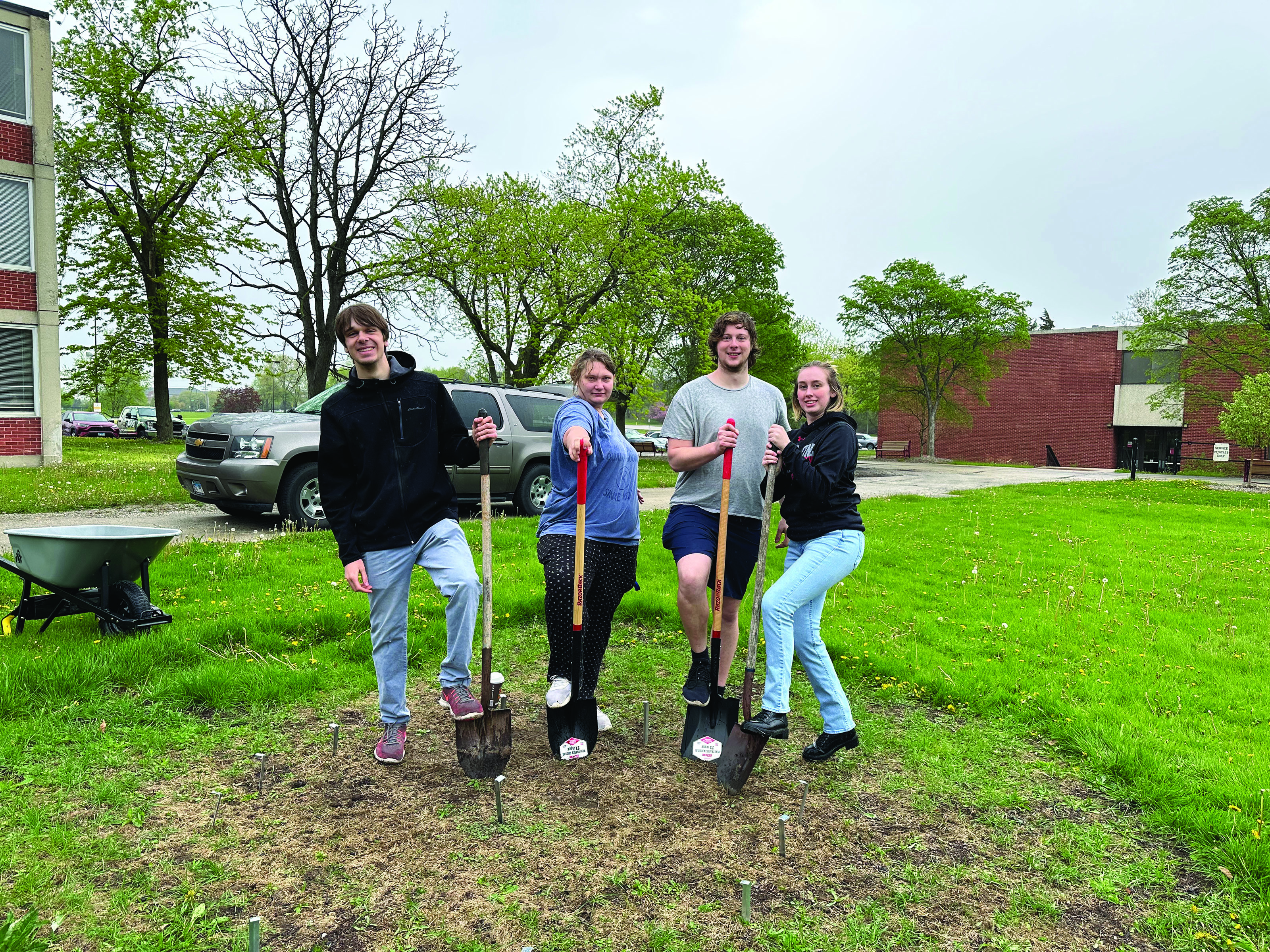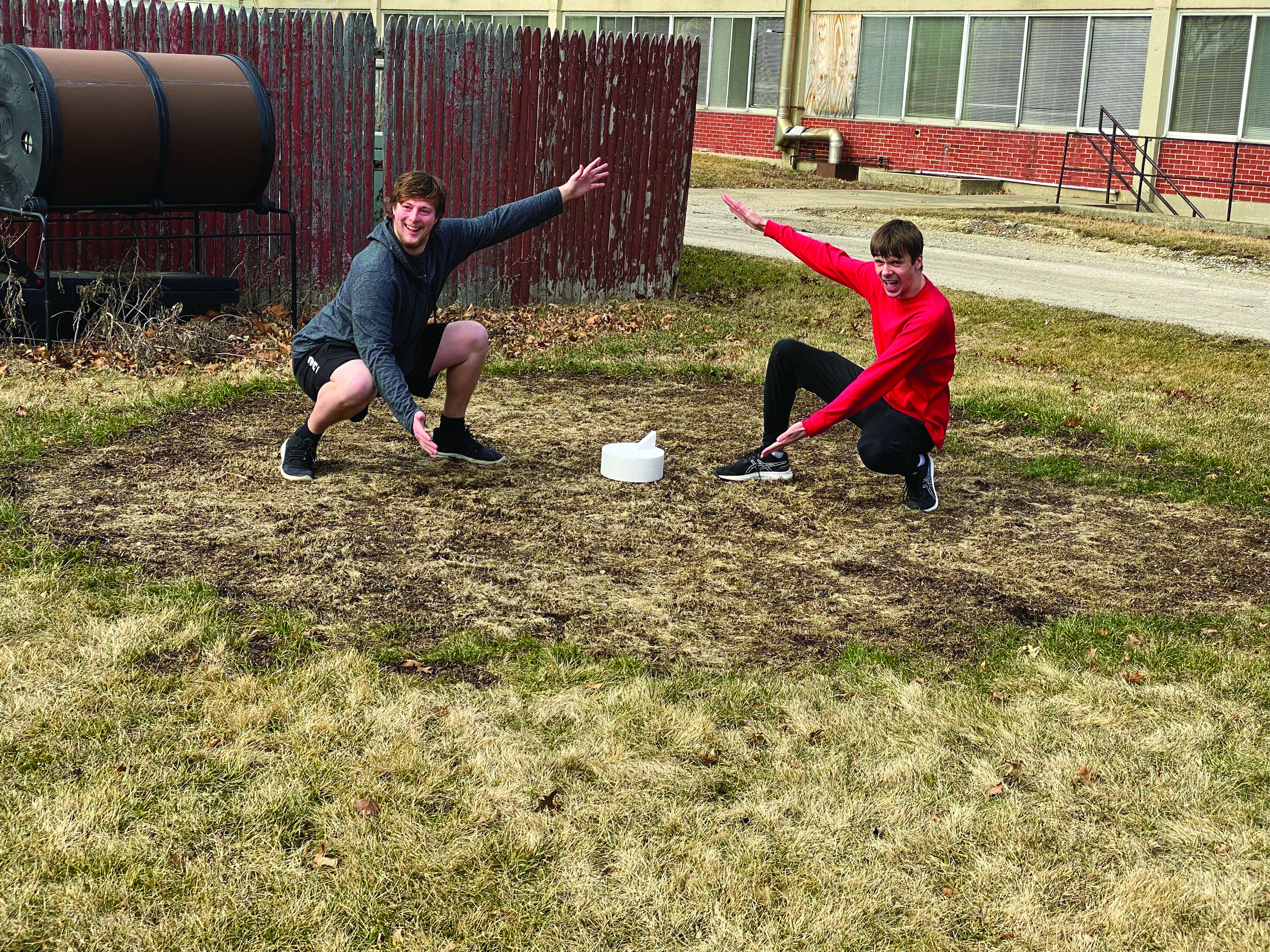The Fundial: A Sundial for Live Streaming
Fall
2023
Building Blocks - Undergraduate Research and Outreach Projects
The Fundial: A Sundial for Live Streaming
Jeffrey Creager, Jeffrey Korbitz, Kierra Pendill, and Jordan Werner, SPS and American Chemical Society (ACS) Club Members, Benedictine University
Many of us have heard the warning, “Let’s not reinvent the wheel here.” This saying implies that recreating objects or techniques that were developed in the past is foolish. But that conclusion could not be further from the truth—especially when, rather than the wheel, it’s the sundial that’s being reinvented.
Sundials are a significant and ancient technology. Using the motion of earth relative to the sun, they produce shadows that can be used to measure time. The earliest known sundial dates back to approximately 1500 BCE in ancient Egypt.1 The Greeks and Romans improved their precision, while ancient Babylonian, Chinese, and Mayan civilizations developed similar solar timekeeping technologies. The sundial was critical to many cultures, as it was one of the earliest clocks and the first to be powered by nothing more than the sun and mathematics.
At Benedictine University, we are in the process of building a sundial on campus to serve the same purposes as historical sundials—to keep time and be a gathering place. We will also do outreach with our sundial, sharing the fascinating physics and mathematics governing it with the community. Finally, thanks to modern technology, we’ll live stream the sundial so that we can reach out to a global audience.
Elements of a sundial
At its core, a sundial consists of a gnomon—the thing that casts a shadow, the base upon which the shadow is cast, and markers that correlate the shadow’s position to time. If you know the latitude and longitude of your location and utilize the equation of time for the current season and month, you can accurately read a sundial.2
Sundials force us to reconnect with nature, with the rising and setting of the sun. They remind us that the sun gets higher and lower in the sky throughout the year and that the sunlit day varies in length.
Building our sundial
The first step to any construction project is choosing a good location. We decided to build the Benedictine University “Fundial” in the center of campus for all members of the Benedictine community to see. It will be surrounded by our community gardens, baseball field, and art building.
We started by identifying a central point and outlining a circle 2 meters in diameter around that point. Then, working as a chapter, we excavated the top 6 inches of the circle. We poured a layer of sand on top of the soil to create a smooth base and placed a hand-welded metal ring around the circumference. After adding rebar to make the base more durable, we poured concrete into the circle.
We then attached a steel gnomon to the center of the sundial and used a compass to align markers for the local meridian line. Next, we added numbers to show the hours. And finally, we purchased a solar-powered camera with Bluetooth connectivity and set up a live stream of the sundial. If all goes as planned, we’ll be ready to stream the sundial in late 2023. Keep an eye on benedictinesundial.com.
We’re looking forward to seeing this project come to life. We hope the Fundial will serve as a gathering place for members of the Benedictine community and help us reconnect with nature and the motions of the planets, especially our own. And we hope that people on campus and around the world will enjoy seeing our sundial and learning the science behind this timepiece via our live stream.
Our club has already learned a lot about the sun and how to predict its motion during the day and throughout the year—and about basic construction! The project has inspired us to study the mathematics of the earth’s motion and why we see shadows of particular lengths at particular times. We’re excited to be merging this ancient device with modern technology by making the sundial visible to anyone, anywhere.
References
- “Short History of Sundials,” European Association for Astronomy Education, eaae-astronomy.org/projects/find-a-sundial/short-history-of-sundials.
- J. Vincent, “The Mathematics of Sundials,” Australian Senior Mathematics Journal 22, no. 1 (2008).
Get Money for Chapter Research Projects
SPS Chapter Research Awards provide up to $2,000 for physics and astronomy research projects deemed imaginative and likely to contribute to the strengthening of the SPS program, like the Fundial. Applications are due November 15. Learn more at spsnational.org/awards/chapter-research.
More from this department
Building Blocks - Undergraduate Research and Outreach Projects


